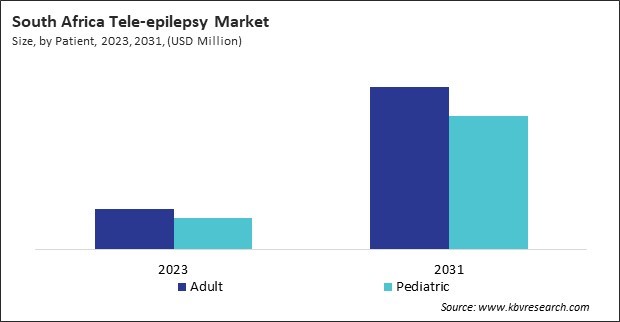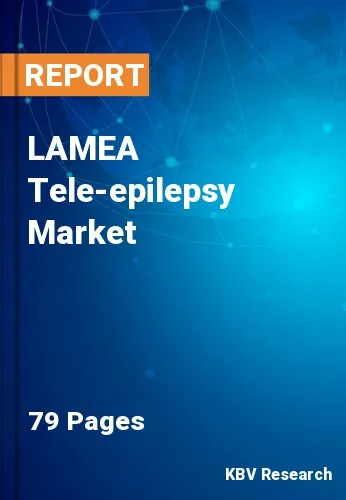The Latin America, Middle East and Africa Tele-epilepsy Market would witness market growth of 18.3% CAGR during the forecast period (2024-2031).
The Brazil market dominated the LAMEA Tele-epilepsy Market by Country in 2023, and would continue to be a dominant market till 2031; thereby, achieving a market value of $24.8 million by 2031. The Argentina market is expected to witness a CAGR of 19% during (2024 - 2031). Additionally, The UAE market would register a CAGR of 17.1% during (2024 - 2031).

Artificial intelligence (AI) and machine learning (ML) advancements have revolutionized the tele-epilepsy market by offering enhanced predictive, personalized, and data-driven care. AI-powered tools can now analyze complex EEG data from portable EEG headsets, like those developed by Epitel, to continuously monitor brain activity and alert providers to potential seizures. This allows patients greater freedom, as they can be monitored remotely rather than through frequent in-person visits.
Moreover, AI enables tracking specific seizure triggers through wearable devices and mobile apps, such as those created by Seer Medical, allowing for personalized insights into what environmental factors may contribute to each patient’s seizures. By identifying and managing these triggers, patients can make lifestyle adjustments to minimize their seizure risk, gaining more control over their condition and improving their quality of life.
The South African government has supported telemedicine through its “National Digital Health Strategy,” which aims to leverage digital solutions to enhance healthcare access. In collaboration with organizations like the World Health Organization (WHO) and the Council for Scientific and Industrial Research (CSIR), South Africa has built tele-epilepsy platforms to reach epilepsy patients in remote and underserved areas. Pilot programs have been launched in rural regions, allowing specialists from urban centers to conduct consultations and follow-ups via telemedicine. South Africa’s collaborative approach with international organizations and its focus on digital health solutions are helping to build a sustainable tele-epilepsy market. Therefore, with a focus on bridging healthcare gaps and improving quality of care, the LAMEA region holds significant growth potential for the tele-epilepsy market.
Free Valuable Insights: The Worldwide Tele-epilepsy Market is Projected to reach USD 1.3 Billion by 2031, at a CAGR of 15.5%
Based on Patient, the market is segmented into Adult and Pediatric. Based on End Use, the market is segmented into Healthcare Consumers, Hospitals Providers, and Payers. Based on Component, the market is segmented into Software, Hardware, and Services. Based on countries, the market is segmented into Brazil, Argentina, UAE, Saudi Arabia, South Africa, Nigeria, and Rest of LAMEA.
By Patient
By End Use
By Component
By Country
Our team of dedicated experts can provide you with attractive expansion opportunities for your business.

